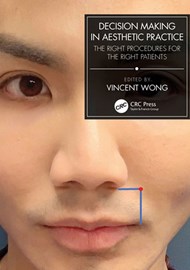
This is a mini treasure and absolute must for any aspiring aesthetic practitioner. The demand for aesthetic medicine is rapidly growing and this book is a concise haven of knowledge not only for those early on in their training but also for established clinicians.
It is succinct yet comprehensive and is lightweight and easy to carry around. It makes for easy reading with illustrations, bullet points and case studies including annotated before and after photographs.
Consultation is key and the first chapter emphasises the importance of this. From conducting an effective consultation to ensuring that your technique is effective, this chapter discusses the salient points in establishing a good patient rapport, exceeding expectations and making first impressions count.
The skin is the largest organ in the body and the focus of the first of the clinical chapters. Other topics covered include basic anatomy, wound healing and rejuvenation. Topical and surface treatments are introduced alongside energy-based therapies and injectable bio-stimulators. The sub-topics are nicely discussed in a question and answer format with pearls of wisdom at the end of each sub-section.
Chapters three to nine cover facial sub regions, for example: the forehead, cheeks, jawline and neck. Each one of these is very well written, from anatomical considerations to treatment options, combining treatment modalities and discussing potential complications. There are plenty of case studies in each chapter with well-annotated diagrams and clinical photographs indicating injection sites or thread entry / exit points.
Chapter 10 covers the scalp; this topic is not always included in aesthetic medicine texts so it is refreshing to see here. It is informative, detailed in the anatomy and classification sections. Several different approaches to managing hair loss are covered, from oral and topical solutions to minimally invasive options such as platelet rich plasma and growth factor induced therapy. This chapter also covers camouflage and surgical intervention with hair transplantation. The case studies demonstrate actual results and are a good indication as to what can be achieved.
The final chapter discusses balancing non-surgical and surgical interventions. This is extremely important in aesthetic medicine as we should be ensuring our patients are aware of all treatment modalities, in order to make an informed decision regarding treatment.
Overall, this is a lovely text that is easy to digest and a must-have for aspiring aesthetic clinicians.





